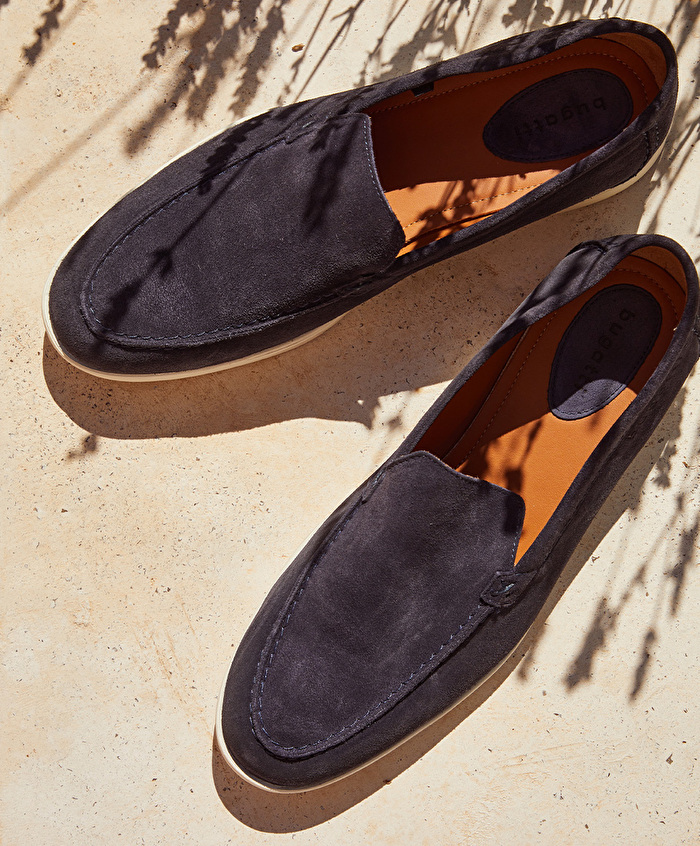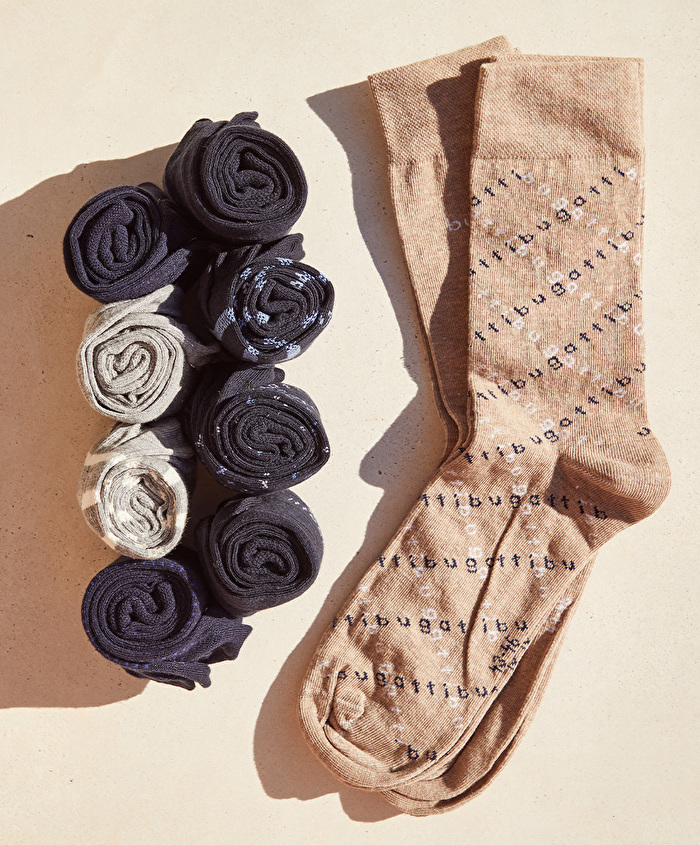Washing wool - how to look after your favourite jumper
Whether cashmere, alpaca or merino wool: wool stores heat and at the same time absorbs moisture. The fine fibres, usually spun from sheep's wool, reliably keep your body warm in cold temperatures and even protect you from moisture. In the summer, wool turns out to be a self-cleaning and temperature-balancing material. However, wool needs to be taken care of properly in order to look good for a long time to come. You are therefore right to ask yourself how it should be washed. We share the best tips on how to maintain your wool clothing's good looks and soft feel for a long time to come.
How to get wool clothing ready for washing
Denk bitte daran, dass es sich bei Wollfasern um ein natürliches Produkt handelt.
Please keep in mind that wool fibres are a natural product. The delicate material can become felted or lose its shape – just like natural hair can become lank and tangled. This is due to tiny keratin scales that become caught in each other when they are subjected to hot temperatures and strong rubbing. Ultimately, the process will shrink the piece of wool clothing into a ball. De-felting a shrunken piece of wool clothing is extremely laborious. However, you can prevent it from felting if you know the basics of how to take care of wool properly. It is a natural product; caring for it properly is therefore what it's all about.
Due to wool's delicate properties, the piece of clothing should not be cleaned as soon as it's been worn just once. It's a better idea to air the wool again outdoors: simply slip the piece onto a hanger and hang it by an open window, on the balcony or out on the patio. Thanks to the dirt and odour repellent properties, these pieces of clothing will lose slight traces of a sweat smell as well as odours from smoking or cooking almost completely through airing. Particularly the moist night air is effective when it comes to the removal of creasing and unpleasant odours. If you do not have any outdoor space, a cool basement can be a good alternative, provided it does not have its own unpleasant smell!
When you have to wash wool
It's a good idea to give the label a quick glance before you start the wash cycle.
It will often provide precise washing instructions. Like other materials, the laundry should be separated according to colour beforehand. Wash light-coloured and white laundry together, and colourful and dark clothing with each other. This prevents unsightly discolourations on a blue wool jumper , for example. It may be impossible to remove them later, and might turn a high-quality piece of clothing into something that is only suitable for the recycling bin or gardening – unfortunately, a discoloured wool jumper can no longer be worn to the office or on social occasions.
It's basically always a good idea to not overload the drum of your washing machine. Ultimately, it should only be filled up to a maximum of 25 percent with delicate materials such as wool or silk.
It is also important to protect wool clothing from pilling right from the start. You can do this by washing it inside out. This prevents the surface of the piece of clothing from touching the drum walls, and from causing unwanted snagging on other pieces. Fasten all press studs and hooks to ensure that the jumper cannot cause damage to itself and other textiles in the drum.
All about the right cycle and the ideal detergent
Unless stated otherwise on the care label, you can machine wash a dark navy wool cardigan , for example. Choose a special wool cycle to remove stains without any damage to the delicate fibres. In order to put as little stress as possible on the wool, you should preferably was it cold at a maximum of 30 degrees Celsius.
You should also choose a short and gently spin cycle. A spinning speed of between 600 and 800 is enough to gently spin the wool.
You should also choose your detergent carefully, as not all washing powders or laundry liquids are suitable for wool. Colour and universal alkaline laundry products, for example, can put holes in textiles. Aggressive washing powder is also not suitable for these delicate fibres.
It's a better idea to opt for an eco-detergent with a neutral pH value. Alternatively, baby shampoo protects the fibres equally well. From time to time, you can also use soap or a gentle wool conditioner. Both contain natural wool wax, which strengthens the fibres. They will be more dirt and water repellent afterwards.
Apparently, a vinegar rinse is also effective. Should your favourite green cotton jumper lose its shine, vinegar may revive the colour. Simply add a dash of vinegar when you wash it by hand – and the colours will look like new.
By the way: conditioner and wool are not a good combination. It damages the delicate fibres and makes them lose their elasticity. You wouldn't want clothing that's completely lost its shape, would you?
Be careful when you hand-wash wool
You need to take extra special care when washing wool by hand. Do it gently to ensure that the fibres don't get damaged by rubbing or wringing the piece out too hard. For example, if you work a washed wool scarf too hard, it will become felted or shrink. Should you nevertheless decide to wash virgin or sheep's wool by hand, you should first of all soak these delicate pieces in lukewarm water and then rinse them carefully in plenty of clean water. After that, you should only stretch the wool very gently until it regains its original shape.
How to dry your wool jumper
Wet wool quickly loses its shape if it is put on a washing line to dry. You should therefore stretch the wool very gently until it regains its original shape and lay it flat onto a towel, then roll the towel up with the piece of wool clothing inside. You can then carefully press the water out of the piece of clothing without the risk of damaging the wool fibres. Afterwards, put the washed merino wool piece flat onto an airer. To prevent the fibres from hardening, you should never dry wool in direct sunlight or on a radiator. If your piece of alpaca wool clothing is labelled accordingly, you can gently tumble-dry it. If this is not indicated on the label, you should air-dry it.
How to look after wool – tips for different types of wool as well as cotton
How to look after wool – tips for different types of wool as well as cotton
Whether alpaca wool, sheep's wool, virgin wool, merino wool or cotton, which shares many characteristics with animal-derived wool: each type of material has special properties. You should therefore look after the delicate wool fibres properly and keep to some basic rules:
How to look after wool
Slightly shiny acrylic wool is easy to care for and best washed at a temperature of 30 degrees.
The hard-wearing fibres of alpaca wool are easy to care for.
Fluffy angora wool should be statically raised again after the wash cycle. You can do this by putting the piece of clothing into a plastic bag and giving it a good shake.
Sophisticated cashmere wool should be washed carefully in the washing machine. A high-quality cashmere jumper should be dried flat.
Merino wool can simply be washed. This type of wool doesn't really absorb sweat and dirt. Alternatively, merino wool can therefore also be dried outdoors.
Caring for mohair wool from angora goats is quite laborious. To take proper care of a piece of clothing made of angora wool, regularly brush it with a special brush after the wash cycle.
Fine camel hair is almost indestructible. This temperature-balancing wool therefore needs no special care.
How to prevent wool from felting or shrinking
A few tips will help you to maintain your wool clothing's good looks for a long time.
To prevent the fibres from shrinking, experts say you should to the following: as soon as your jumper begins starts to look "fluffy", wrap it in a plastic bag and put it in the freezer overnight. You'll see: your piece of clothing will feel much softer the next day. To stop the material from felting, you should not wash it by hand before putting it in the freezer.
If pilling has already occurred (i.e. you can see small bobbles on its surface), there's another tip: put the piece of clothing flat onto a straight surface and carefully shave the "bobbles" off with a razor blade or scissors. What is important is patience; systematically deal with the bobbles one at a time. You can also use a special fine comb to prevent damage.
























